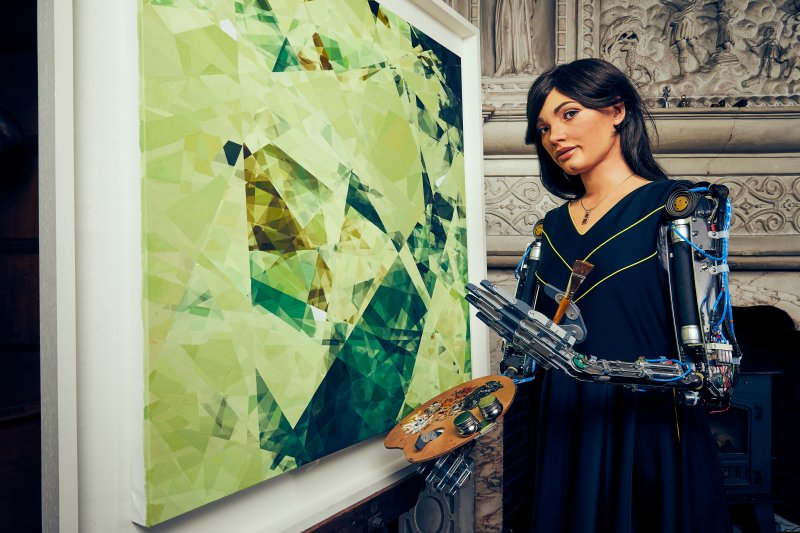Art & Science Master's student
Phygitality in Art During Times of AI
Technology is changing the way we look at art but also the world’s conceptualization of processes, property, materials and hybridization. Artists who have been classically trained for fine or conceptual arts now need a multidisciplinary profile that aims to experiment with both worlds by merging them into the phygital realm.

The emergence of artificial intelligence in art has brought up new questions over the last ten years. In particular, these have included a reflection on the importance of the emotional component of art. We already have Sophia the Robot and Ai-Da, who have already been exhibited at the most important worldwide museums and galleries, an achievement that often takes at least two decades for any lucky midcareer or highly experienced artist.
Not only are they part of a renewed art industry, but also showcase in events such as the Deeep AI Art Fair in London, where 30 artists who master digital art and AI are showcasing their work physically and selling it as NFTs. There is also BILIA, an AI Latin American Art Biennial happening in February 2022. On the other end of spectrum, there’s Mowna’s Museum current exhibition: "This show is curated by a machine" an event where a neural network learned to curate by looking at artworks from the Museum of Modern Art and The Chicago Art Institute.

Part of the present studies by multidisciplinary artists have been channeled to find workflows where they replicate physical forms with technological processes such as drawing and painting with robotic arms or training GANs with organic movements for creating a machine-based choreography. It is usually criticized that software biases aesthetics on the work created by each interface, which usually confuses the public's perception and is described as "cold" or alike to only a few variants. Personally, I have been experimenting with both sides; classical, analog fine arts as well as generative/creative coding. It has been relevant not only for producing hybrid work, but for opening discussion on the field, exhibitions and events that introduce the public and other artists to sciences and humanities as an evolution of added complexity layers for thought; where machines learn from humans and vice versa. Viewers crave new experiences that surprise them and somehow trigger creativity for imagining the metaverse.

These models have been recently implemented in collaboration with science/engineering companies that look for new ways to use their products in a more creative approach. Fab Labs from different countries are studying processes, materials, and experimentation with several machines for reinforcing the connection from brain to hand and hand to tangible objects.
After these years of experimenting with both human and machine languages, I have observed that still more progress is needed for making a conceptual/technical balance in both worlds; particularly on AI art experiments, where there is much more work to be done. Looking for high quality banks of images that are based on human drawings or paintings where algorithms distinguish them instead of a generic internet search is vital. Current research is focusing on trying to fill part of the gap between analog and machine-produced artworks. By adding layers of complexity where results look and feel more natural and still innovative in language, boundaries are still being pushed while opening up to further artistic expressions without being too conditioned by the limitations of a software.
A bet for going hybrid should be considered; opening to discussion, exploring and evaluating processes of how we think, draw, sculpt and communicate wisely between us and the robots.
